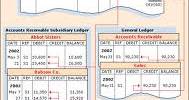The maximum output level that a company can sustain in order to provide its products or services is referred to as capacity. Depending on the industry, capacity can refer to a manufacturing process, human resource allocation, technical thresholds, or a variety of other concepts.
The term “capacity” refers to a “restriction” or an upper limit. One of the most difficult tasks for managers is determining the appropriate level of capacity. Having too much capacity in comparison to demand means incurring significant costs for unused capacity. With insufficient capacity, some customers’ orders may go unfulfilled. These customers may switch to other suppliers and never return. As a result, it is equally important to comprehend the concepts and implications of an appropriate capacity level.
- Theoretical Capacity
Theoretical capacity is a denominator-level concept that is based on always producing at maximum efficiency. It assumes that nothing ever goes wrong in your production. Accountants describe this capacity as always operating at maximum efficiency.
For example, if Everest Steel Industries can produce 15 units of wardrobe per shift when the production lines are running at full speed, and a shift consists of 8 working hours, giving three shifts per 24 hour period, the annual theoretical capacity is 15 units x three shifts x 360 days = 16,200 units.
- Practical Capacity
Practical capacity is a denominator-level concept that reduces theoretical capacity due to unavoidable operating interruptions such as scheduled maintenance time, holiday shutdowns, and so on. It is the level of capacity that includes unavoidable operational interruptions. Another term for unavoidable operating time losses. Assuming that the practical production rate is 12 units per shift and that the industry can operate 300 days per year, the practical annual capacity is 12 units x 3 shifts x 300 days = 10,800 units.
- Normal Capacity
Normal capacity is the amount of output that can be reasonably expected in the long run. Normal capacity accounts for downtime caused by periodic maintenance activities, crewing issues, and so on.
What a plant can supply is measured by both theoretical and practical capacity. Normal capacity, on the other hand, measures the denominator level in terms of demand for the plant’s output. Normal capacity utilization is a concept based on capacity utilization that specifies the average customer demand over a time period, taking into account seasonal, cyclical, and trend factors.
- Budget Capacity
The denominator-level concept of budget capacity is based on the expected level of capacity utilization for the budget period. When budgeting for the amount of output that can be achieved, normal capacity should be used rather than theoretical capacity, because the likelihood of achieving normal capacity is quite high. Normal capacity levels may decrease over time as production equipment ages and requires more maintenance effort.
















